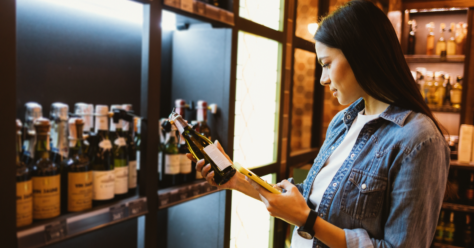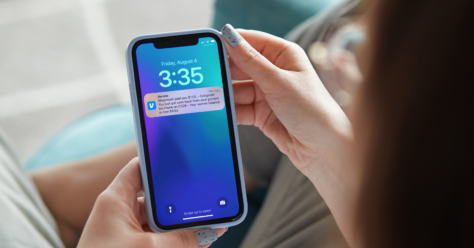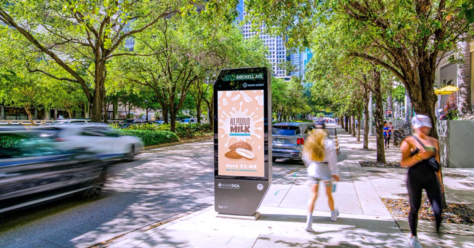
Mike Merna is the Senior Commercial Lead on eCommerce, which focuses on Quotient’s sponsored search offering. In our recent spotlight interview, Mike shared how he’s seen eCommerce change during his time at Quotient, how COVID-19 has impacted the business, and where he sees eCommerce going in the future.
Read on to discover more about Quotient eCommerce and how our self-service eCommerce platform can benefit your brand.
As someone who has driven the launch of many campaigns, what are the elements of a winning digital one?
Even though that’s the terminology we all use, I believe we should move away from focusing on “campaigns,” and instead focus on brand strategy that includes campaigns. Meaning, a campaign should not be a one-off but a constant presence that moves that business forward every single day and then heavy up during significant drive periods.
That will give brands a prominent place on the digital shelf. The digital shelf is the space that a CPG product occupies on a grocery retailer’s eCommerce site, and it is crucial for the brand to be there and appear high on the listing.
Sponsored search is the tool brands can use to get a prominent placement on the digital shelf. This is especially important for brands that are not currently the category leaders that have already secured an organic prominent placement. And as we have seen during Covid-19, challenger brands now have a unique opportunity to capture market share and a solid strategy will help them convert one-time shoppers into repeat customers.
So that continual strategy is what really makes the difference? Brands can’t just be showing up for Christmas and expecting that to be enough?
Unless you’re selling Christmas trees, you should be doing this year-round!
How has eCommerce for groceries changed since the beginning of the year?
If you think about CPGs and eCommerce as a whole, shoppers were mostly shopping in-store with a small percentage shopping online. Since COVID, this behavior has changed and more shoppers feel comfortable using digital platforms as part of their journey—be it for a fully digital buy or a hybrid shop online, pick up in-store option. Walmart, for example, was able to take advantage of its expansive footprint to attract new customers during the initial COVID stock-up period. When online delivery spots were in high demand and shopper loyalty was low, Walmart had the advantage over eCommerce-only retailers because shoppers could go to a physical Walmart store to pick up their online orders. It just goes to show how versatile the eCommerce shopping experience can be.

For whichever way they decide to engage with the retailer, brands should make sure they are present on the digital shelf.
We have seen massive increases in eCommerce sales during the COVID time period—and not just in people that were already eCommerce shoppers who are using it more often. That’s definitely been part of the growth, but we’ve also seen shoppers who are using the technology for the first time. And it’s all different age groups, too, because everyone was essentially forced to try it.
What’s really interesting is the stickiness of it. Time will play out how sticky this new behavior will be. I think it will vary by life stage. The busier and perhaps more affluent you are, the more likely I think this behavior will stick. If you’ve got more free time and are willing to work a little more to pay a little less, maybe it won’t be as sticky. What is certain is that patterns are shifting and the brands that remain visible and offer value will end up in the basket.
Are there certain CPG brands that are better suited to eCommerce than others?
Some brands within CPG lend themselves to higher eCommerce sales. One trend that you wouldn’t necessarily expect is that dairy products do very well on eCommerce; produce and bacon do very well, frozen food, etc. Basically, items that you can mostly only really find in a physical grocery store tend to do really, really well in my experience. For example, baking ingredients have been seeing huge increases in sales. Adult beverage is a high performer on eCommerce, too—though, probably as an add-on because we are all trying to mitigate our physical trips in-store.
What is the best advice you can give CPGs regarding eCommerce?
I’m happy to say that there are very few brands who aren’t sold on the idea of grocery eCommerce. I could have given you a very long list two years ago of CPG brands who were not big believers. However today, particularly post-COVID, but probably even leading up to it, everybody realizes the power of digital and sees the channel growing. So, my advice would be to focus on your strategy – are you trying to convert new buyers or increase buy rate among existing buyers – What’s your sweet spot of desired ROAS vs driving topline growth? Is it about converting buyers via eCommerce or helping them plan their in-store trip? Focus on these things and the campaigns will follow.
If you have any questions or want to learn more about how Quotient can help your brand win with eCommerce, contact us at communications@quotient.com.



